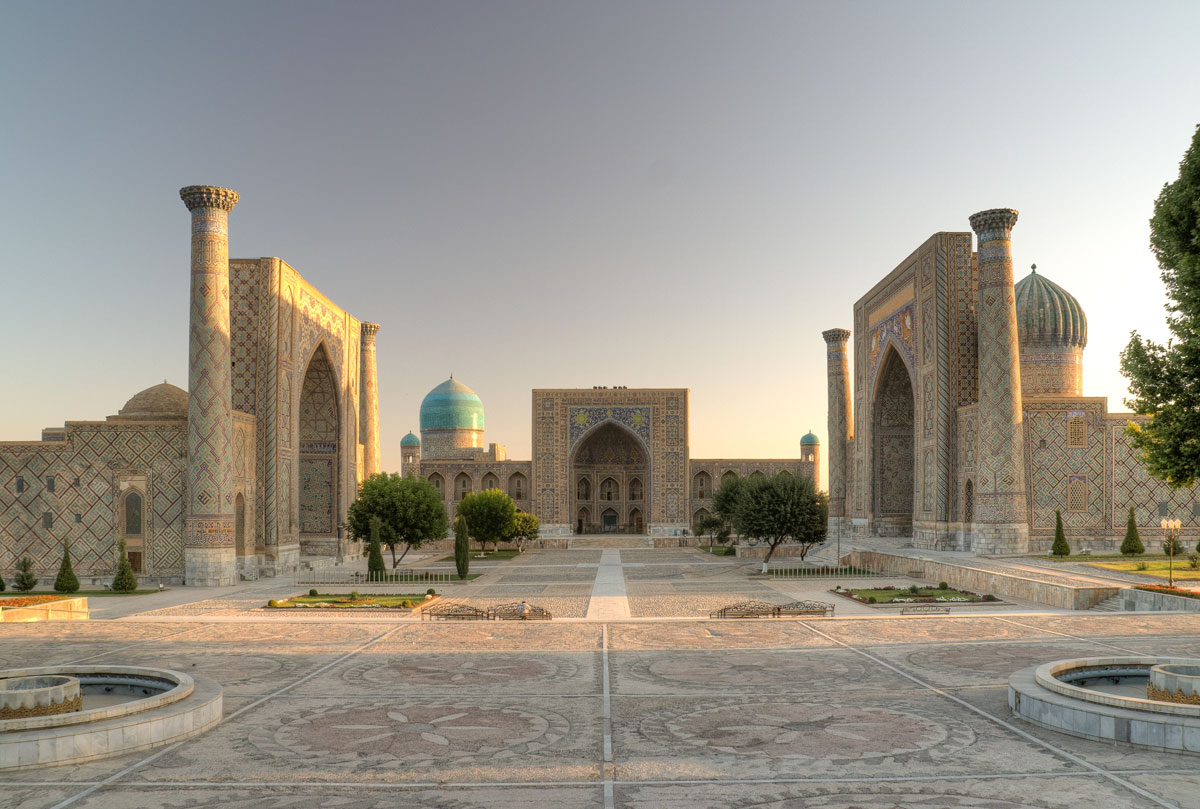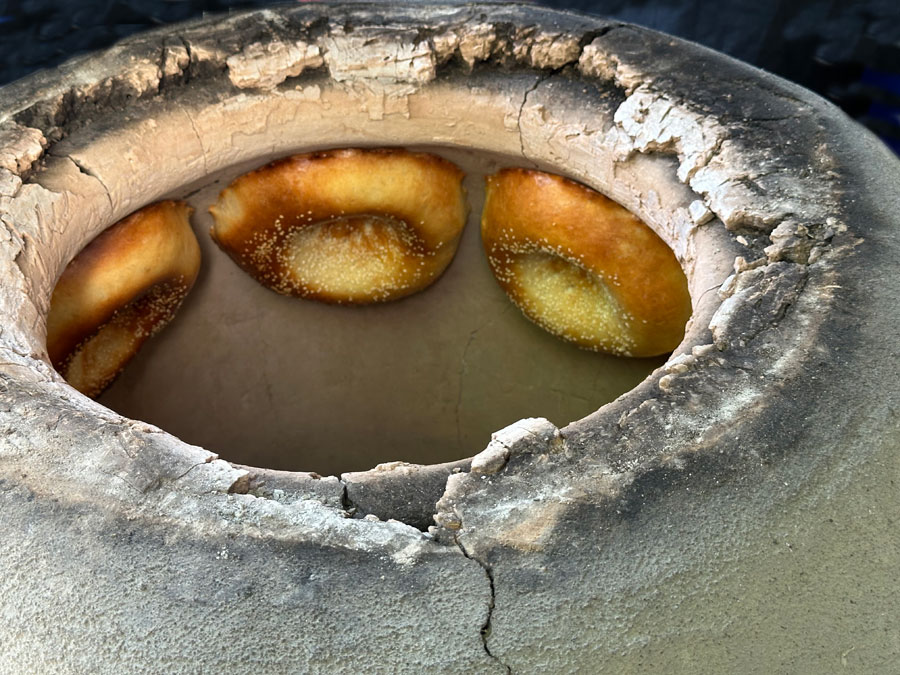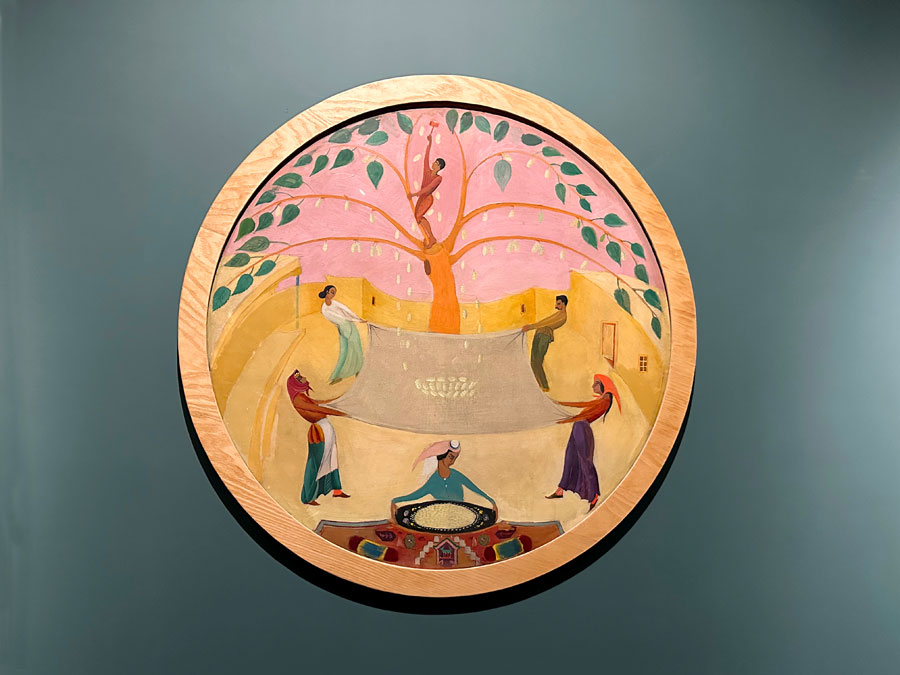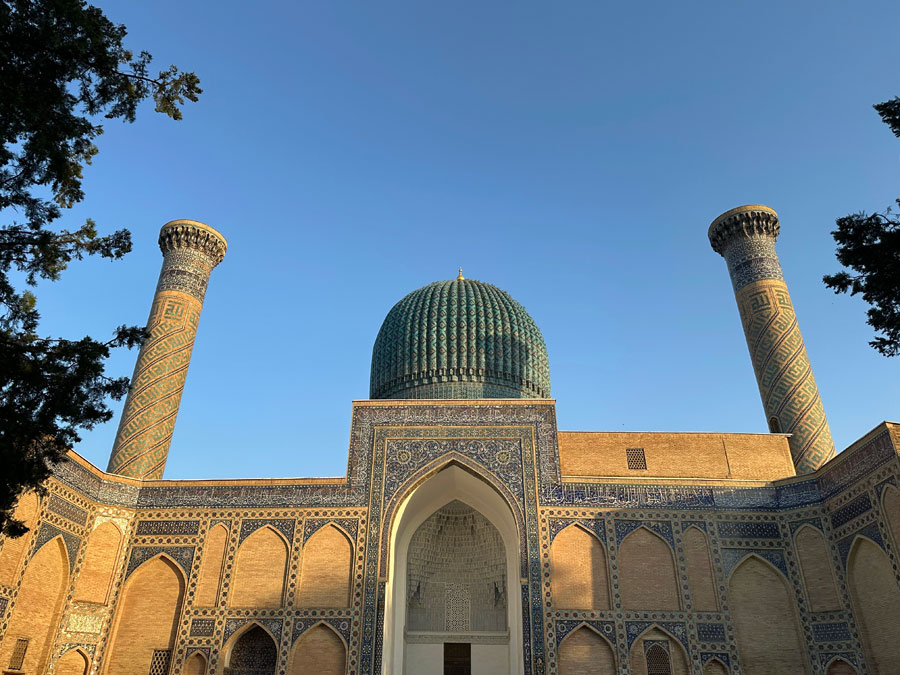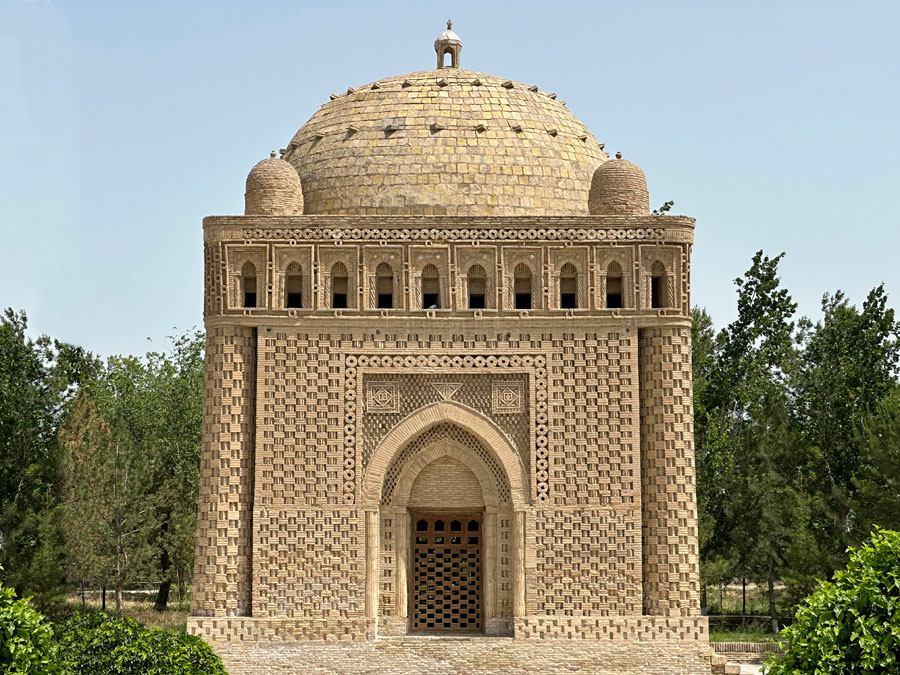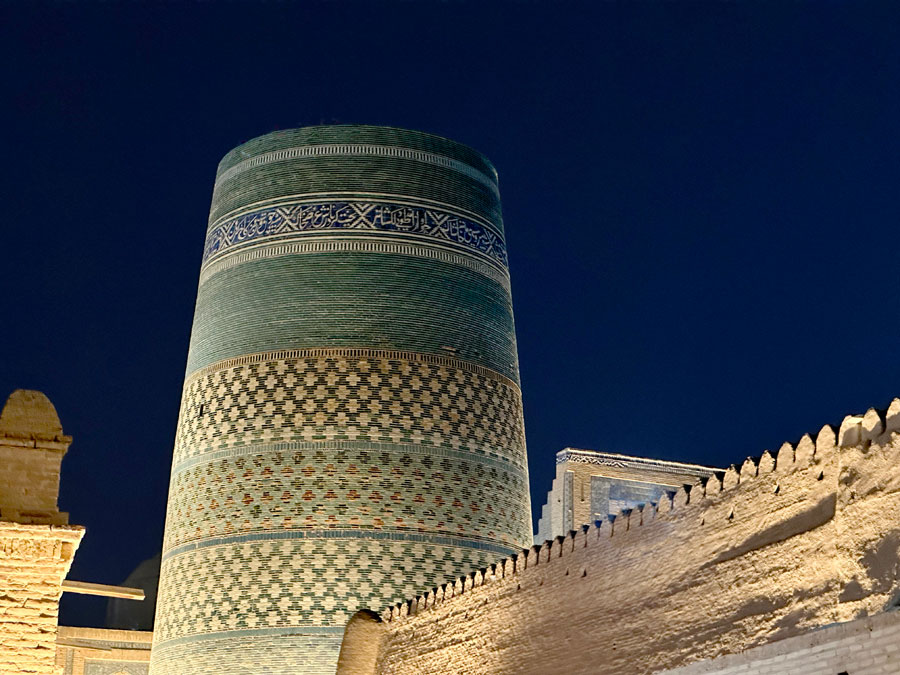Uzbekistan Visit, May 2025
Unusually this is a personal note from the co-author. It is about her Silk Road journey in May 2025, organized by Dunhuang Foundation. Since Uzbekistan shares many cultural, historical, linguistic and architectural features with Iran, it was a long-cherished dream of mine to explore it. To see more photos, please click here. The ancient cities of Samarkand, Bukhara, Khiva and Tashkent have a lot to offer. Please click here and go to the above cities in Uzbekistan to find out more.
Registan Square, Samarkand, photo by Ekrem Canli (creative common license)
In the introduction, it is appropriate to include this exquisite photo of the Registan Square in Samarkand, by Ekrem Canli, as it was impossible for me to take a photo of this quality of the entire complex. Below you can see selected photos of the sites and features that were most appealing to me and more relevant to my life experience. Please note that there are various transliterations for the Uzbek and Persian words/names.
Click on the images below to enlarge
Samarkand, Shir Dor Madrassa (literal meaning “school with lions”)
This 17th-century madrassa (school), which boasts elaborate tile decorations and features lions (shir) on top of its iwan entrance, is one of the three madrassas which form the most recognizable landmark of Samarkand and perhaps Uzbekistan. The complex is known as Registan Square – registan simply means the place of sand. The complex is somehow reminiscent of Naqsh-e Jahan Square in Esfahan.
Samarkand, Bread Making
Bread plays an important role in the Persian way of life and ceremonies. It is included in the Persian sofrehs, especially the sofreh-ye aqd. In the Persian tradition it symbolizes blessing and abundance (barekat). Our visit to a bakery in the Old Town neighbourhood of Samarkand, followed by tasting the Gala-Osiyogi flatbread which was freshly baked in a clay oven, was a nostalgic experience bringing back many childhood memories of traditional breads baked in clay ovens (tanoor) and their delightful aroma.
Samarkand, Bibi Khanum Mosque
The Bibi Khanum Mosque, commissioned in the late 14th century by Timur (Tamerlane), was intended to be one the largest mosques in the Islamic world. Designed to showcase the power of the Timurid Empire, it features grand domes, towering minarets and intricate mosaic work. Though partially ruined over time, it has been extensively restored and remains a striking symbol of Samarkand’s historic splendour and Silk Road legacy. For me, the mosque is reminiscent of the blue-tiled monuments of Esfahan.
Nukus, Savitsky Art Museum (Karakalpak Museum of Arts)
I was particularly intrigued by the history and collection of this remote desert museum. The founder, Igor Savitsky, managed to amass a collection of banned avant-garde Soviet artworks without the interference of Moscow. The story of this collection has been told in an award-winning documentary. I also recommend this informative article.
The collection is diverse and very impressive, but I found this small “naïve” painting from 1921 by Oganes Tatevosyan, “Mulberry picking”, particularly charming and nostalgic.
Samarkand, Gur-Emir (“Tomb of the King”)
The Gur-Emir Mausoleum is the tomb of Timur (Tamerlane) and a masterpiece of Timurid architecture. Built in the 15th century, it boasts elegant proportions and features a striking blue dome and ornate tilework. It also houses the graves of Timur’s descendants, including Ulugh Beg, who was an astronomer and mathematician. Influencing later Mughal architecture, Gur-Emir remains a symbol of Samarkand’s historical and artistic legacy. We had the opportunity to visit the actual tomb itself in the lower ground, which is usually closed to the public.
Bukhara, Ismail Samani Mausoleum
To me, the Mausoleum of Ismail Samani, founder of the Persian Samanid Dynasty, is most elegant in its simplicity and is truly jewel-like. The cubic monochrome structure is a stunning example of 10th-century Islamic architecture. It features intricate brickwork and perfect geometric design. Blending pre-Islamic and Islamic styles, the structure’s cube shape and domed roof symbolize harmony between the earth and the sky. Remarkably well-preserved, it stands as a timeless symbol of Central Asia’s rich cultural and architectural heritage.
Tashkent Museum of Applied Arts
I have been interested in the suzanis of Central Asia for over thirty years, and have a modest, but quality collection. I have also researched and written about these intricate works of art. They are usually hand-embroidered by young girls to be included in their dowery. Hence, they are relevant to the subject of the book, in which the Persian marriage ceremony is discussed at length. The suzani’s design theme is predominantly floral, and to this day skilfully executed works are being produced. One of the main reasons I wished to visit Central Asia was to see more suzanis. Here is a charming late-19th-century piece from Bukhara, on display at the Tashkent Museum of Applied Arts. To see more examples, please visit voicesoncentralasia.org.
Khiva, Kalta Minor Minaret
The Kalta Minor Minaret is one of Khiva’s most iconic landmarks. Commissioned in 1851 by Muhammad Amin Khan, it was intended to be the tallest in Central Asia but remained unfinished after his death. Its unique, squat form and vivid decoration are captivating, especially at night, and make it instantly recognizable. Kalta Minor reflects the ambition of its era and remains a powerful symbol of the city’s architectural beauty and rich cultural history—both qualities bring back memories of Esfahan.

